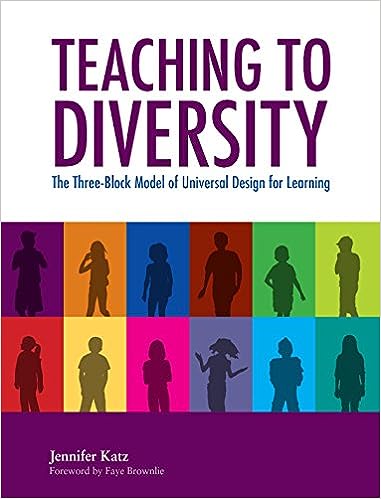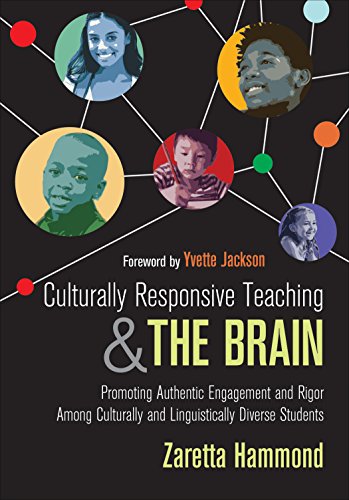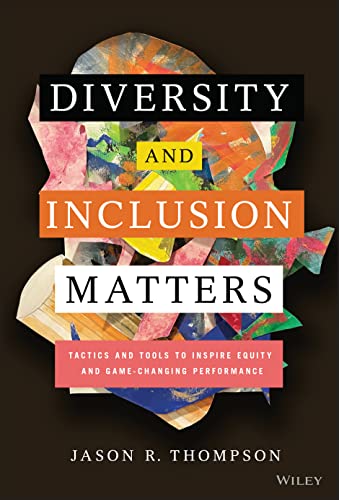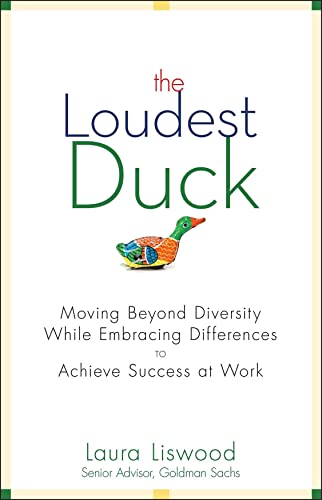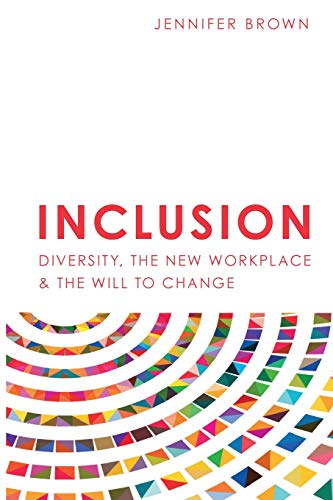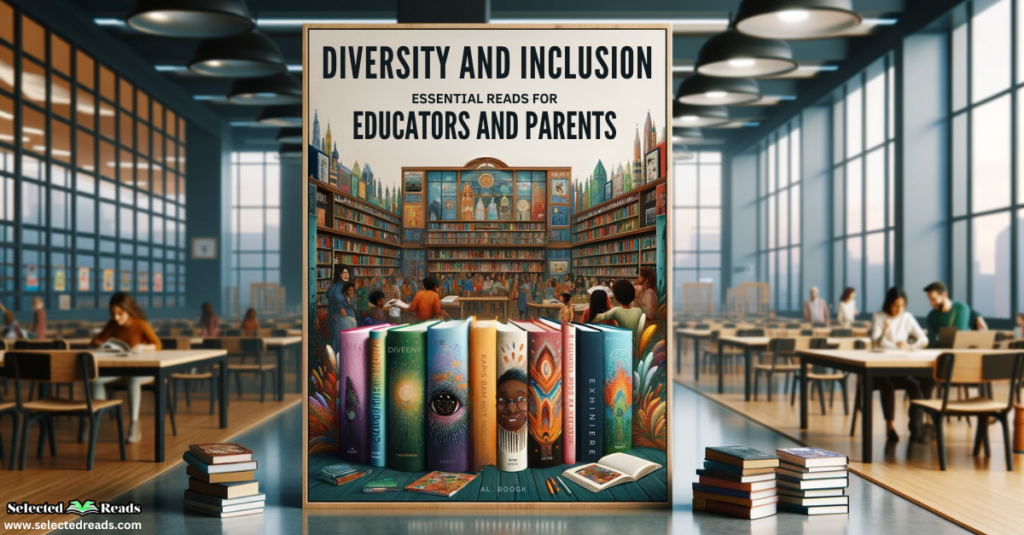
Diversity is not just a buzzword; it’s a vital force that shapes our classrooms, workplaces, communities, and lives. It’s about recognizing, embracing, and celebrating the differences that make us unique, while finding the common ground that unites us. For teachers, educators, and parents, understanding diversity is key to fostering an environment where every student feels valued, respected, and empowered to reach their full potential.
In today’s increasingly interconnected world, where classrooms are filled with a rich tapestry of cultures, backgrounds, and perspectives, the importance of teaching our children about diversity cannot be overstated. But how do we navigate these complexities ourselves, and how can we impart this understanding to the young minds we guide?
I’ve curated a collection of insightful books on diversity and inclusion that offer valuable lessons, not just for educators and parents, but for anyone interested in expanding their horizons and embracing the beautiful mosaic of human experience. These books delve into the intricacies of diversity in the workplace, society, and our personal interactions, providing tools and strategies to create more inclusive spaces.
And if you’re interested in exploring diversity from the perspective of children’s literature, don’t miss my other post on diversity books for kids. It’s a handpicked selection that promises to spark meaningful conversations with the young readers in your life.
Books about Diversity and Inclusion
Here are some good books about diversity and inclusion to consider:
1. “Your Students, My Students, Our Students: Rethinking Equitable and Inclusive Classrooms” by Lee Ann Jung et al.
Equity and inclusion are the bedrock of successful education. This book takes a bold approach, challenging traditional restrictive environments and advocating for change that’s inclusive and collective.
It’s not just about “special” or “general” educators, but all educators working in harmony. By leveraging the strengths of teachers and honoring each student’s aspirations, it paints a realistic picture of what’s possible when everyone is committed to a belief that every student belongs to all. It provides practical tools and inspiring real-life examples that demonstrate the potential of empowering education.
2. “Promoting Equity in Schools: Collaboration, Inquiry and Ethical Leadership” by Jess Harris, Suzanne Carrington, and Mel Ainscow
This book explores a new way to make schools more effective for all students, focusing on ethical leadership and collaboration. By providing an intimate look at a three-year experiment in schools in Queensland, Australia, it sheds light on the challenges and possibilities of developing equitable education.
Despite policy difficulties, the authors demonstrate that leadership committed to equity can foster more inclusive ways of working. This book is an important testament to the power of community and the importance of fair education.
3. “Becoming a Critically Reflective Teacher” by Stephen D. Brookfield
In this landmark guide, Stephen Brookfield encourages teachers to engage in critical self-reflection, viewing their practice through various lenses—from students’ eyes to colleagues’ perceptions to theory and personal experience.
The revised edition, with new insights on social media, race, leadership, and more, provides practical tools to help teachers align teaching with student outcomes and manage diverse classrooms.
With over 45 years of experience, Brookfield illustrates how challenging one’s own assumptions leads to teaching that achieves the desired results, making this a must-read for educators aiming to reach their full potential.
4. “Teaching to Diversity” by Jennifer Katz
Dr. Jennifer Katz’s “Teaching to Diversity” is a comprehensive synthesis of research and years of experience in inclusive classrooms. It introduces a three-block model of Universal Design for Learning (UDL) that covers social and emotional learning, inclusive instructional practice, and supporting systems and structures.
From building compassionate learning communities to implementing UDL classrooms, the book offers a step-by-step approach to making inclusion work for all students. It’s not just about techniques; it’s about creating environments that heal and nurture every student’s heart, mind, and spirit.
5. “Inclusive Education for the 21st Century” by Linda Graham
This book provides a timely call to action for reimagining what true inclusion looks like in today’s classrooms. It’s not just about integration but embracing diversity in a way that fosters true equity and belonging.
6. “Culturally Responsive Teaching and The Brain” by Zaretta L. Hammond
Hammond’s approach aligns perfectly with our collective efforts to bridge the gap between various cultural backgrounds in the classroom. By linking neuroscience with pedagogy, the book lays down practical strategies that can be readily applied. This aligns with many modern theories that emphasize cultural competence in teaching.
7. “Blindspot: Hidden Biases of Good People” by Mahzarin R. R. Banaji and Anthony G. Greenwald
This book provides an insightful exploration of unconscious biases. It’s a must-read for educators to recognize and challenge those biases within themselves, allowing for a more compassionate and fair approach to teaching. I found the authors’ use of the Implicit Association Test a fascinating way to delve into this complex issue.
8. “Diversity and Inclusion Matters” by Jason R. Thompson
Thompson offers a practical guide to implementing diversity, equity, and inclusion (DE&I) in an organizational setting. This could be beneficial not only for school leaders but also for those in corporate sectors.
9. “So You Want to Talk About Race” by Ijeoma Oluo
Oluo’s book is a much-needed guide for those difficult conversations about race. It’s accessible and relevant to anyone, regardless of background. In my own practice, I’ve found that open dialogue, as promoted in this book, can be a powerful catalyst for change.
10. Inclusify: The Power of Uniqueness and Belonging to Build Innovative Teams, by Stefanie K. Johnson
This book offers valuable insights into the subtle difference between mere diversity and genuine inclusion. From my time in the classroom, I learned that making everyone feel that they belong while also valuing their individuality is a delicate balance. Johnson’s approach could have wide-ranging applications not only in team dynamics in businesses but also in school classrooms.
11. Better Allies: Everyday Actions to Create Inclusive, Engaging Workplaces, by Karen Catlin and Sally McGraw
As a former teacher, I would have found this book an excellent resource for creating a more inclusive classroom environment. The scenarios and insights offered by Catlin could be easily translated to a school setting, promoting understanding and cooperation among students of diverse backgrounds.
12. How to Be an Inclusive Leader, by Jennifer Brown
Brown’s developmental stages of becoming an inclusive leader are something that school administrators and educators can learn from. In my experience, moving through these stages can help foster a more welcoming and productive learning environment. Understanding that anyone can and should be an inclusive leader is something that resonates with my educational philosophy.
13. We Can’t Talk about That at Work! by Mary-Frances Winters
This book hits on a significant issue in both the workplace and the educational field. Avoiding difficult topics is rarely productive. Winters’s approach, which emphasizes awareness, understanding, and careful conversation structure, could be a game-changer in educational settings where controversial subjects must be handled with care.
14. The Loudest Duck, by Laura A. Liswood
In “The Loudest Duck,” Liswood takes a fascinating approach to diversity. She artfully uses cultural parables to highlight the contrasting values, expectations, and approaches in various societies, especially in the workplace. The book reflects on the unconscious biases and preconceptions that all of us carry, which can influence how we interact with others in our professional life. Liswood offers solutions for embracing diversity, such as conscious awareness, effective leadership, and behavioral patterns that allow a truly diverse team to thrive.
15. Inclusion: Diversity, The New Workplace & The Will To Change, by Jennifer Brown
Jennifer Brown’s “Inclusion” resonates with anyone aiming to create an inclusive workplace where everyone feels valued and respected. The book isn’t just about accepting others; it’s about embracing diversity in all forms and tying it directly to organizational success.
Final thoughts
Embracing diversity is a continuous journey that enriches our lives, classrooms, and communities. The books highlighted in this post are powerful guides to navigating the complex landscapes of diversity and inclusion. They offer us the chance to reflect, learn, and grow.
Let’s take these insights to heart, applying them to our teaching practices, parenting strategies, and daily interactions. Together, we can create a more inclusive and compassionate world, one where every individual is seen, heard, and celebrated.






